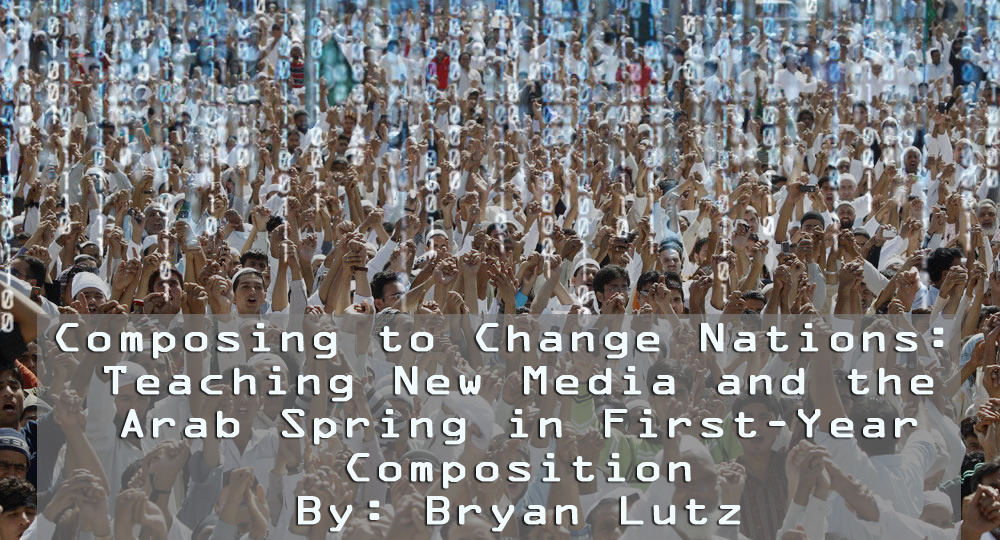Acknowledgements
I would like to thank Dr. Sherrie Gradin for encouraging me to explore the complications of identity within an American politic; Dr. Albert Rouzie for encouraging me to explore technology in the classroom and reminding me not to argue ideals without considering validation and dissonance; Dr. Mara Holt for her careful guidance in organizing this essay and for encouraging me not to hide my voice as a writer; Dr. Jennie Nelson for challenging me to validate my blog assignment empirically; Dr. Cynthia Selfe for her scholarship and her feedback on an earlier draft of this essay; Dr. Kristine Blair and the reviewers at Computers and Composition Online for their thoughtful guidance in revising this webtext; Journalist Jordan Terrell for putting me in touch with people participating in the movements in Egypt; Lana Oweidat for helping me to translate the Arabic contained in much of the rhetoric shared with me through Facebook and Twitter; Ashley Evans for her encouragement and for valuable data on the use of social networking in the classroom; Claudia Auger for her feedback on several drafts of this article and for allowing me to utilize her extensive vocabulary; Amanda Hayes and Matthew Nunes for their contributions through peer-review; Mickey Heart for his feedback on the aesthetics of this webtex; The Peach District, who prove every day that a small group of people can make a difference; And finally my students, who pioneered the blog assignment spring and fall quarters, 2011 and winter quarter, 2012.
